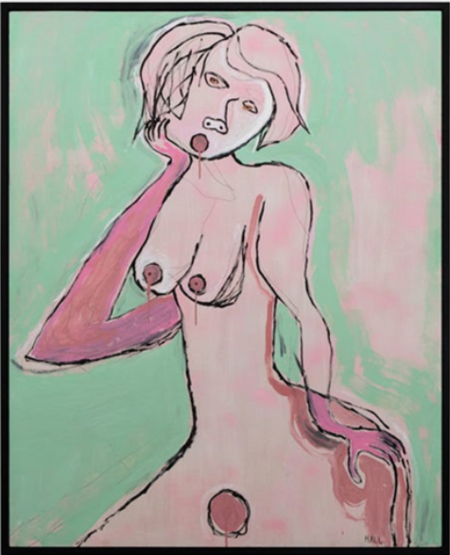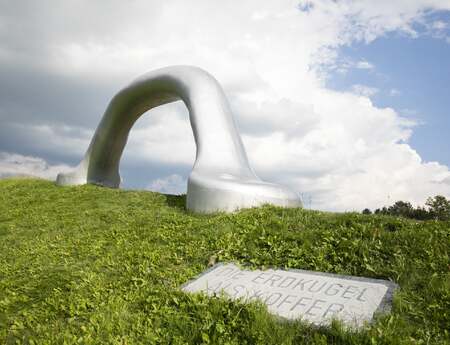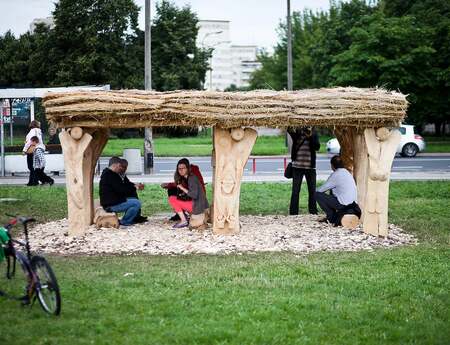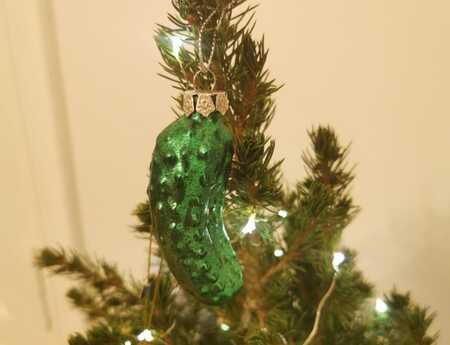The Female Gaze: Voyeurism Redefined
There are some shared aspects of the female experience that are collectively understood, if not always spoken. Voyeurism, or the male gaze, which has likely existed since the dawn of artistic development in humans, is one such phenomenon.
There are some shared aspects of the female experience that are collectively understood, if not always spoken. Voyeurism, or the male gaze, which has likely existed since the dawn of artistic development in humans, is one such phenomenon, and was at last granted a name in 1975. When Laura Mulvey published her essay ‘Visual Pleasure and Narrative Cinema’, she simultaneously gave a moniker to an inherited social conditioning of generations of women before her, dominantly present within the traditional artistic canon.
“In a world ordered by sexual imbalance, pleasure in looking has been split between active/male and the passive/female. The determining male gaze projects its phantasy onto the female figure which is styled accordingly. In their traditional exhibitionist role women are simultaneously looked at and displayed, with their appearance coded for strong visual and erotic impact so they can be said to connote to-be-looked-at-ness.”
The subsequent acknowledgement and creeping condemnation of voyeurism throughout contemporary culture has not necessarily eradicated it from arts, but has elicited responses from female artists in various forms. One such expression comes in the artistic development of the female gaze. The female gaze, or female voyeurism, is not generally defined as a direct polar to the male gaze. Instead, it is a reestablishment of the way women are portrayed in traditional artistic outputs, such as sculpture, portraiture or performing arts, and is uniquely determined by the female artist. The female gaze aims to take control over the manner in which the feminine form or subject is sexualized, or made to seem vulnerable, for the pleasure of the viewer.
Italian-born American artist Vanessa Beecroft is among the earliest examples of female voyeurism. As photographer Phillip Schorr observed, "Beecroft is interested in the aesthetics of how women look when they are looked at, and her body-conscious projects encourage alienation between model, artist, and audience." Her performances, paintings and sculptures are unabashedly confrontational in nature, and challenge the audience to consider their part as an active, voyeuristic participant in each piece.
Beecroft’s most prominent works feature nude or nearly nude female figures posed in various styles, often matching either military or fashion industry aesthetics and posturing, which maintaining direct and unwavering eye contact with the viewer.
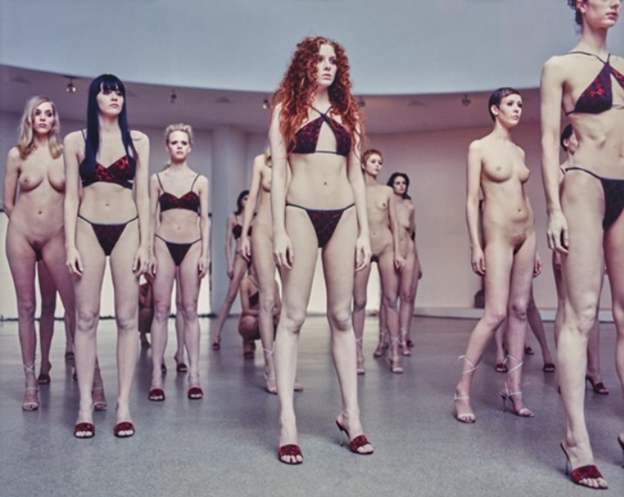
Her approach to voyeurism has served to critique global war, the physical demands on women in the modeling and entertainment industry, and the normalization of the male gaze in Western culture from the 1990s to the present.
Contemporary photographer Nona Faustine follows in a similarly confrontational fashion, while drawing upon the complexities of her experience as an African American woman. In her WHITE SHOES series, Faustine photographs herself nude in a variety of locations across Brooklyn, NY.
Her pose in each photograph depicts a hyper-awareness of her vulnerability and mistreatment as a Black female in America. In “Like A Pregnant Corpse The Ship Expelled Her Into The Patriarchy”, her body is sprawled along the jetty rocks of the Atlantic coast. In “Of My Body I Will Make Monuments In Your Honor”, she stands atop a soapbox in Brooklyn’s Dutch Pre-revolutionary cemetery, where three slaves are buried among early settlers. The first, arguably most dominant image among the series, is “She Gave All She Could And Still They Ask For More”, which alludes to a constant pressure on women to meet (male) expectations surrounding physical aesthetics, sexuality, behavior, and culture.
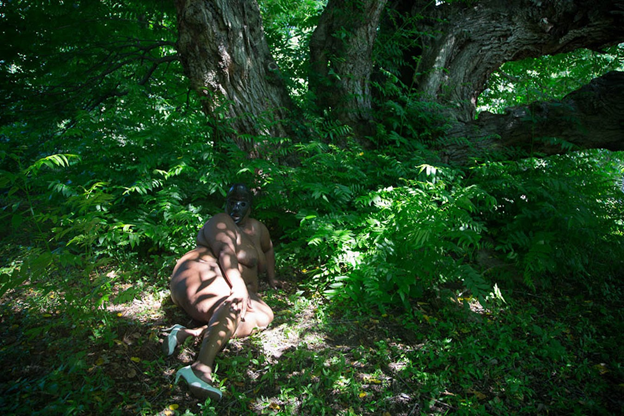
from the WHITE SHOES series by Nona Faustine, 2014.
In each of these images, Faustine’s face is either hidden or distorted, positioning her naked physical form as the subject--much in line with the traditional male gaze. The work is contextualized as female voyeurism in the artist’s postured self-portraiture, condemning titles and historically charged locations chosen for the series To see more of Faustine’s voyeuristic work, view her portfolio here.
Another approach to female voyeurism comes in the distortion of the traditionally curated, Westernized aesthetic of “desired” female representation. Employing tropes of “look-at-me-ness” per Mulvey and confrontational performance quality à la Beecroft, multidisciplinary artist Trulee Hall’s colorful practice seeks to change the viewer’s understanding of female sexuality.
In speaking with Janelle Zara for Art Basel Magazine, Hall explains “‘We [as women] have been conditioned to be sexy, but not too sexy’”. The female figures in her work are intended to be perceived as “‘uncomfortable, somewhere between embarrassing, awkward and sexy’”, potentially transforming the experience of the viewer from guilty or indulgent voyeur into cognizant observer and champion of the honest female experience of sexuality and vulnerability.
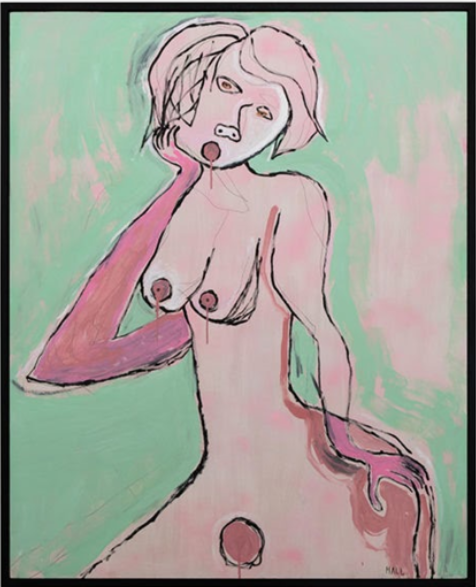
The Other and Otherwise exhibition
t Maccarone Gallery, 2019.
Among countless others, Beecroft, Faustine and Hall share a commonality in their approach to female voyeurism: their work has the potential to educate men, and to provide women a relief from traditional roles they have played in art and in life. These artists wield the female gaze with the intent to provide women a visual representation they can relate to, and to acknowledge the shared experience of women as objects of aesthetic pleasure in traditional artistic practices. While the academic and cultural interpretation of the female gaze continues to evolve, the common theme of honest discourse and rendering of the feminine subject will continue to prevail - to the betterment of viewers of any gender.
About the Author

Chelsea McIntyre is a Los Angeles-based artist working in sculpture, text, performance, digital and mixed media. Her work is informed by elements of Abject Psychoanalysis, Institutional Critique, Russian Constructivism and Material Fetishism and Voyeurism. She enjoys studying the human psyche by exploring the relationship between performer and audience, often engaging the audience as active members of each piece. To learn more about Chelsea and her work, visit her website at chelseamcintyre.art

